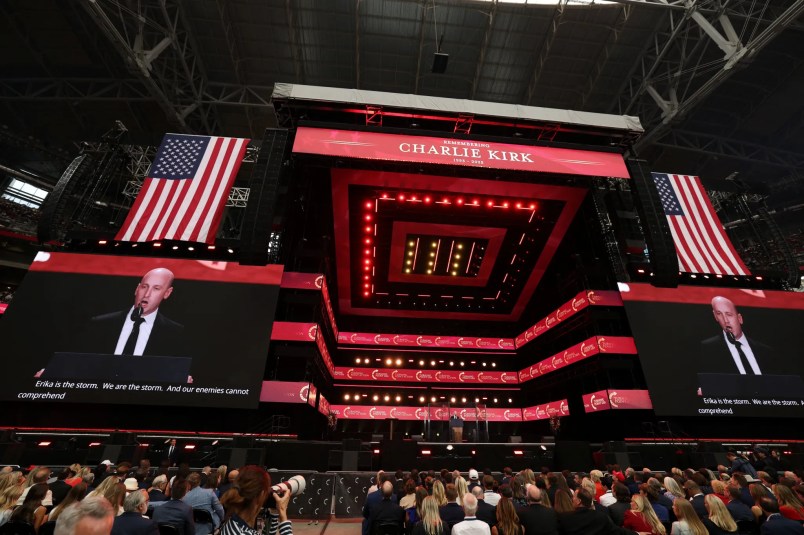Since the assassination of Charlie Kirk, you’d think that the main violent force in American life lies on the left.
Top Trump administration officials have spent the days since Kirk’s murder using it as an excuse to crack down on the political opposition. In this telling, Kirk himself was a responsible steward of public discourse, a martyr felled as part of a long, forceful, national campaign to eradicate right-wing voices.
To experts and former government officials who have devoted their lives to studying and fighting violent extremism, this narrative is galling.
According to research conducted by multiple federal agencies and academics, in this century, right-wing extremism has been the dominant inspiration for politically motivated attacks within the U.S.
“We know better,” Bill Braniff, director of the Department of Homeland Security’s Center for Prevention Programs and Partnerships until his resignation in March, told TPM.
The office that Braniff ran, known as CP3, focused on fighting violent extremism. First created after 9/11, the office doled out grants to states and local governments, and worked to coordinate different law enforcement entities and other groups to prevent mass shootings, assassinations, and other attacks before they happened. Braniff resigned after massive staffing cuts from the Trump administration; the office is widely seen as defunct after Trump installed a 22-year old former intern as Braniff’s successor.
Since the assassination, he and other extremism experts have watched with concern as Trump officials rushed to blame Kirk’s death on progressive groups, pledging to suppress speech and defund left-wing political organizations.
The Justice Department even scrubbed from its website a study finding that far-right extremists have committed far more homicides than those on the left.
At the core of the administration’s campaign is a claim, stated by White House official Stephen Miller, that liberals represent a “vast domestic terrorist movement.”
“We are going to use every resource we have,” Miller said,” throughout this government to identify, disrupt, dismantle and destroy these networks and make America safe again.”
To Heidi Beirich, a researcher who has spent her career studying violent extremism and the far-right, the Trump administration’s response and the effectiveness with which it permeated national commentary after the assassination is deeply disheartening.
“It’s incredibly depressing. And, I think, it’s quite scary,” she told TPM. “I just feel like our discourse has completely fallen apart.”
Beirich, co-founder of the Global Project Against Hate and Extremism, said that the administration’s response would likely only add fuel to the fire.
“They’re waving the bloody shirt and trying to rile people up against the left,” she said. “And I just don’t see how that helps anybody in this rather perilous moment that we’re in.”
Researchers say it’s also unclear how many people are driven to violence purely for ideological reasons, as opposed to that being one factor among many. Braniff recalled research he had conducted which suggested that people who were likely to commit an attack for other reasons “self-medicated” with extremist ideologies that, eventually, provided a direction for an attack.
None of that has prevented the administration from doubling down. Trump signed an Executive Order on Tuesday labeling Antifa as a domestic terrorist organization, the first time such a designation has been applied to a domestic group (no matter how ill-defined).
Thomas E. Brzozowski, a former DOJ domestic terrorism counsel who departed this year, wrote on LinkedIn that no domestic group had been labeled a terrorist organization because there’s no provision in American law to do so. “This represents government by proclamation rather than law.”
Those kinds of angry partisan demonstrations from the president, combined with the defanging of offices like CP3, have dramatically weakened federal efforts at stopping future acts of political violence before they can take place.
When Trump reentered the White House, Braniff told TPM, 43 states were working with CP3 on strategies to counter violent extremism. Now, that work has all been halted, he said.
“This was not, you know, a particularly political topic at the state level,” he said.





